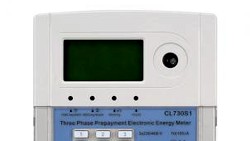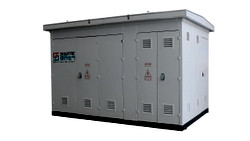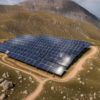In today's world, where energy resources are becoming scarcer and environmental concerns are growing, the need for energy efficiency has never been more critical. Energy efficiency programs and technologies play a pivotal role in empowering consumers to make informed decisions and reduce their energy consumption. In this article, we will explore some of the exciting initiatives and technologies that are revolutionizing the way we use energy and paving the way towards a more sustainable future.
The Power of Awareness
Raising awareness among consumers about the importance of conserving energy is a crucial step in promoting energy efficiency. By providing education and information, consumers can gain a deeper understanding of how their energy usage impacts the environment and their utility bills. Here are some key aspects to consider:
- Energy Audits
Energy audits are assessments conducted by professionals to evaluate a consumer's energy usage and identify areas for improvement. Through energy audits, consumers can gain insights into their energy consumption patterns, discover energy-saving opportunities, and receive personalized recommendations for optimizing efficiency. - Energy-Saving Tips
Simple energy-saving tips can go a long way in reducing consumption. Consumers can benefit from learning about practices such as turning off lights when not in use, unplugging electronics that are on standby, using natural lighting whenever possible, and adjusting thermostat settings for optimal comfort without excessive energy usage. - Online Tools and Apps
Various online tools and smartphone apps are available to help consumers track and manage their energy usage. These tools provide real-time information, allowing consumers to monitor their energy consumption, set energy-saving goals, and receive personalized recommendations for more efficient energy use. They can also provide insights on how different appliances contribute to overall energy usage, enabling consumers to make informed decisions about their energy consumption habits. - Community Engagement
Engaging consumers in community-driven initiatives further enhances awareness and encourages sustainable practices. By organizing workshops, seminars, and local events, communities can foster a sense of collective responsibility towards energy conservation. Sharing success stories, tips, and challenges within the community can inspire individuals to take action and make a positive impact on a larger scale. - Educational Campaigns
Collaborations between utility companies, government organizations, and educational institutions can result in impactful educational campaigns. These campaigns can be targeted towards specific consumer groups, such as households, schools, or businesses, and provide comprehensive information on energy efficiency, including the benefits, available resources, and steps to take for reducing energy consumption.
Smart Home Technologies
Smart home technologies have transformed the way consumers manage and optimize their energy usage within their homes. These innovative technologies offer an array of features and benefits that empower homeowners to make real-time adjustments and enhance energy efficiency. Here are key aspects:
- Smart Thermostats
Smart thermostats have gained popularity for their ability to automatically adjust temperature settings based on occupancy patterns and preferences. By learning your habits and using occupancy sensors, these intelligent devices optimize heating and cooling, reducing energy waste. Additionally, smart thermostats often provide data insights and energy usage reports, enabling homeowners to make informed decisions about their energy consumption. - Smart Lighting
With smart lighting systems, homeowners can control and automate their lighting to optimize energy usage. These systems typically include features such as motion sensors, dimming capabilities, and scheduling options. By automatically turning off lights in unoccupied rooms or adjusting brightness levels based on natural light conditions, smart lighting helps reduce unnecessary energy consumption. - Smart Plugs and Power Strips
Smart plugs and power strips allow homeowners to monitor and control the energy usage of their plugged-in devices. With these devices, you can remotely turn off or schedule power to specific appliances or electronics, helping to eliminate "vampire power" consumption. Some smart plugs and power strips also provide energy monitoring features, allowing you to track the energy usage of individual devices and make informed choices. - Energy Monitoring and Insights
Many smart home technologies provide energy monitoring capabilities, allowing homeowners to track their energy consumption in real-time. This data can be accessed through smartphone apps or dedicated platforms, enabling users to gain insights into their energy usage patterns and identify areas for improvement. By understanding their energy consumption habits, homeowners can make adjustments to optimize efficiency and potentially reduce their energy bills. - Integration with Virtual Assistants
Smart home technologies often integrate with popular virtual assistants, such as Amazon Alexa or Google Assistant. This integration allows homeowners to control their devices using voice commands, adding convenience and ease of use to the smart home experience. With a simple voice command, you can adjust the thermostat, turn off lights, or even check your energy usage, making energy management a breeze.
Energy-Efficient Appliances
Energy-efficient appliances are engineered with advanced technologies and innovative features that optimize energy usage without sacrificing functionality. These design elements include:
- Improved Insulation
Refrigerators and freezers with enhanced insulation materials and design help maintain consistent internal temperatures, reducing the need for excessive energy consumption. - Efficient Motors and Compressors
Appliances like washing machines and air conditioners utilize high-efficiency motors and compressors, which consume less energy while delivering the same or even better performance compared to traditional models. - LED Lighting
Energy-efficient appliances often utilize LED lighting instead of traditional incandescent bulbs. LED lights consume significantly less energy and have a longer lifespan, reducing the overall energy footprint of the appliance. - Smart Technology
Many energy-efficient appliances incorporate smart technology features that optimize energy consumption based on usage patterns and real-time data. These features enable appliances to adapt their operation to minimize energy waste.
To assist consumers in making informed choices, energy-efficient appliances are typically labeled with Energy Star ratings. Energy Star is a widely recognized symbol that indicates the appliance meets or exceeds rigorous energy efficiency standards set by government agencies. The ratings provide a quick and easy way for consumers to compare the energy efficiency of different models within a product category. By choosing Energy Star-certified appliances, consumers can confidently select products that prioritize energy efficiency.

(symbol image, credit Pexels)
Financial Incentive Programs
Many governments, utility companies, and organizations offer financial incentives to encourage consumers to choose energy-efficient options. These incentives can come in various forms:
- Cash Rebates
Consumers may receive cash rebates for purchasing energy-efficient appliances, such as refrigerators, air conditioners, or water heaters. These rebates can significantly reduce the upfront cost of the appliance, making energy-efficient choices more affordable. - Energy-Efficient Financing
Some programs provide low-interest loans or financing options specifically for energy-efficient upgrades, such as installing solar panels or upgrading to energy-efficient windows. This allows consumers to make energy-saving improvements without a significant financial burden. - Energy-Efficient Mortgages
Energy-efficient mortgages provide borrowers with additional funds to invest in energy-saving upgrades when purchasing or refinancing a home. These mortgages take into account the anticipated energy savings, allowing borrowers to qualify for a larger loan amount. - Tax Credits
Governments often offer tax credits to individuals who invest in energy-efficient technologies. These credits can help offset the cost of purchasing and installing energy-efficient appliances, renewable energy systems, or making energy-saving improvements to homes or businesses. By reducing the tax liability, tax credits incentivize consumers to make energy-efficient choices.
Utility Company Programs
Many utility companies offer energy-saving programs as part of their efforts to reduce overall energy consumption. These programs may include:
- Time-of-Use Rates
Utility companies may implement time-of-use rates, where electricity is priced differently based on the time of day. By shifting energy use to off-peak hours, consumers can take advantage of lower rates, reducing their energy costs. - Demand Response Programs
These programs encourage consumers to reduce electricity usage during peak demand periods. Participants may receive financial incentives or bill credits for voluntarily reducing their energy consumption during specified times. - Energy Audits
Utility companies may offer free or discounted energy audits to help consumers identify areas where energy efficiency improvements can be made. These audits provide personalized recommendations to help consumers make informed decisions about energy-saving upgrades.
Partnerships and Collaborations
Collaboration between consumers, utility companies, and government organizations is key to the success of energy efficiency programs. These partnerships allow for the pooling of resources, expertise, and knowledge to create effective initiatives. Here are some examples of collaborative efforts:
- Public-Private Partnerships
Governments often collaborate with private organizations, such as utility companies, to develop and implement energy efficiency programs. By combining public resources with private sector expertise, these partnerships can leverage the strengths of both sectors to achieve greater energy savings. - Community-Based Programs
Local communities play an essential role in energy efficiency efforts. Collaborative community programs bring together residents, businesses, nonprofit organizations, and local government agencies to promote energy-saving initiatives. These programs may include educational campaigns, community outreach events, and incentives for energy-efficient upgrades. - Research and Development Collaborations
Utility companies and government organizations often collaborate with research institutions and universities to conduct studies and develop innovative energy-saving technologies. These collaborations help drive advancements in energy efficiency and pave the way for more sustainable practices. - Energy Efficiency Networks
Collaborative networks bring together individuals, businesses, and organizations in a community to share best practices, exchange ideas, and collaborate on energy-saving projects. These networks create a supportive environment where stakeholders can learn from each other and work collectively towards energy efficiency goals. - Financial Assistance
Collaborations between stakeholders can result in the availability of financial resources to support energy-saving initiatives. This may include grants, loans, or subsidies for energy-efficient upgrades, making it more affordable for consumers to invest in energy-efficient technologies.
Takeaway
Energy efficiency programs and technologies empower consumers to become active participants in the transition towards a more sustainable energy future. By raising awareness, leveraging smart technologies, embracing energy-efficient appliances, and participating in incentive programs, consumers can make a tangible difference in reducing energy consumption and mitigating climate change.
If you have any inquiries or need further information about how CLOU can support energy efficiency programs and technologies for consumers, feel free to reach out to us. We're here to assist you and eagerly await your valuable thoughts and comments. Let's work together towards a more sustainable future!
Thank you for reading. Until then, let's make energy efficiency a way of life!





All comments are moderated before being published. Inappropriate or off-topic comments may not be approved.